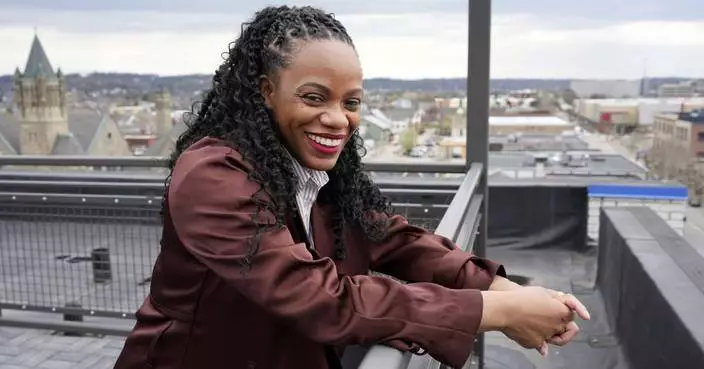Angela Tuffnell has spent years battling ‘invisible’ varicose veins hidden in her pelvis.
A model has opened up about the agonising condition that left her feeling like she was “constantly in labour” – prompting her to self-fund a hysterectomy in a desperate bid to be free of pain.
Click to Gallery
Angela Tuffnell has spent years battling ‘invisible’ varicose veins hidden in her pelvis.
Now though, following another bout of surgery in August 2017, Angela – mum to law Masters student Harriet, 24, and model Grace, 21 – is finally pain free, and has even been able to return to modelling after being forced to put her career on hold.
She continued: “Facing this has been the biggest battle of my life but thank goodness I had the tenacity to keep fighting.
Then, in 2010, she started to feel unwell.
At her worst, she would pass out and vomit because of the pain in her pelvis.
“It really is an invisible illness. It’s not a known condition at all, hence why I want to share my story.”
Angela Tuffnell, 57, of Cheshire, has spent years battling varicose veins hidden inside her pelvis. At points, it was so severe she could scarcely stand, and would pass out from the pain.
Close to breaking point because of her illness – pelvic congestion syndrome (PCS) – she even paid for a hysterectomy, but sadly that had little effect.
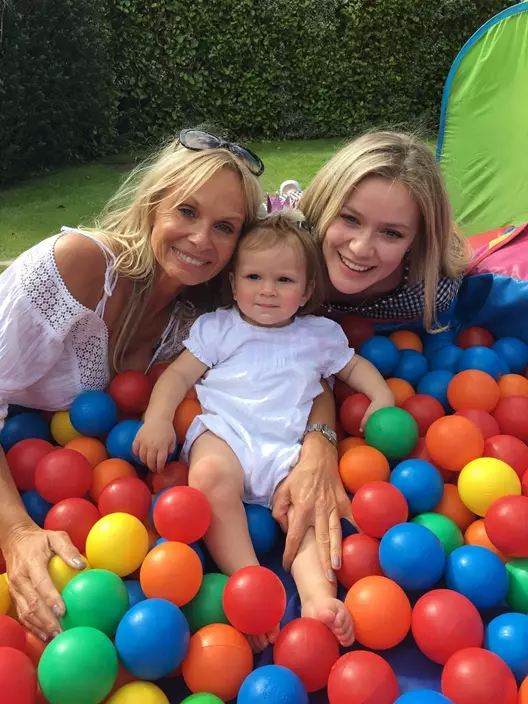
Angela with her daughter Harriet and granddaughter Aurora (PA Real Life/Collect)
Now though, following another bout of surgery in August 2017, Angela – mum to law Masters student Harriet, 24, and model Grace, 21 – is finally pain free, and has even been able to return to modelling after being forced to put her career on hold.
She said: “The only way I can describe the pain is like a constant, long, slow labour. At points, I actually thought I was dying.
“At first, I thought it was just age catching up with me, but now I know I had actually been walking round with this condition for years.”

Angela with her boyfriend Bill (PA Real Life/Collect)
She continued: “Facing this has been the biggest battle of my life but thank goodness I had the tenacity to keep fighting.
“Doctors cannot be sure of the cause of PCS, but after I enquired, they told me it can be genetic, or the result of an underlying condition exacerbated by a pelvic trauma such as childbirth.”
For years, Angela was symptom free – aside from a small faulty vein on the inside of her right knee, which she had laser treatment for.

Angela (PA Real Life/Collect)
Then, in 2010, she started to feel unwell.
“The pain was a gradual build,” she said. “I’d always been very sporty and active, but suddenly I was feeling very tired and worn.
“I’d get terrible back ache and found standing for more than five minutes a struggle.”
Over the next two years, Angela’s condition deteriorated more and more.

Angela with Grace, Harriet and Aurora (PA Real Life/Collect)
At her worst, she would pass out and vomit because of the pain in her pelvis.
In a bid to find out what was causing her agonising symptoms, she underwent a string of hospital tests, but initially, doctors were baffled.
Then, in December 2012, she was referred to a vascular specialist, and underwent a transvaginal scan. Two months later, she had her PCS diagnosis.
“I’d never heard of it before,” said Angela, who has been with her boyfriend Bill, 63, around six months after the pair met at the gym. “The tricky thing is that these veins are internal, so not actually visible.
“I wasn’t walking round with bulging veins on my body. When you look at me, you’d never know anything was wrong.

Angela is now speaking out to raise awareness of PCS (PA Real Life/Collect)
“It really is an invisible illness. It’s not a known condition at all, hence why I want to share my story.”
It is still not known what exactly causes PCS, but it occurs because of varicose veins – swollen, enlarged veins, which may be dark purple, bulging or twisted in appearance – in the lower abdomen, which then stop normal blood circulation to the pelvic organs.
According to a report by The Whiteley Clinic and B Consulting and Boston Scientific, for which almost 100 female sufferers were surveyed, it is difficult to detect, with the average patient having 16 GP appointments before diagnosis, and some undergoing as many as 13 diagnostic tests across a four-year period.
In January 2014, Angela underwent the first of two pelvic vein embolism (PVE) procedures, where metal coils are inserted to block faulty veins and stop abnormal blood flows. However, it did little to numb her pain.
She recalled: “Even standing still, I’d be in agony. The throbbing pain was so bad I’d need to lie down, and it’d take hours to stop.
“I could feel the life ebbing out of me, and nobody could help.”
Desperate, Angela paid for a private hysterectomy in August 2014, before undergoing a second PVE in January 2015 when that proved to be unsuccessful.
This time, though, she felt strong enough post-surgery to be able to return to her job as a model and makeup artist, having previously semi-retired whilst she dealt with her condition.
For two years, life ticked along as normal and she believed she was cured– until July 2017, when her pain returned.
“This time, I knew I wasn’t alone. I was armed with knowledge about the condition, and I knew I wanted the best care possible,” she said.
After researching her options online, she booked a consultation at The Whiteley Clinic, who offer expert treatment in vein-related conditions and have practices in Bristol, Guildford and London.
There, medics confirmed that she was still living with PCS, and also had a large, internal varicose vein in her leg.

Angela on holiday (PA Real Life/Collect)
She continued: “All it took was that initial consultation, and the rest is history. My sonographer Judy Holdstock assessed me, and said I was one of the worst cases she’s ever seen. I was classed as chronic.”
In August 2017, Dr David Beckett carried out Angela’s third and final PVE, taking care to bypass the work previously done.
Now, following a procedure to her leg in January 2018, she is happily pain free, having returned to work full-time.
Sharing her story for the first time, she is determined to speak out to raise awareness of PCS, and spare other women her pain.
She said: “For years, I was juggling being a mum, studying, working, and this awful condition. At points, I was close to a breakdown, but I’ve moved forward now.
“I always swore I’d help other women with every aspect of PCS when I was strong enough.
“I want this condition to be on people’s radars so they realise that if you’re feeling pain and exhaustion, if you’re feeling literally drawn to the floor, if you’re looking for the nearest chair whenever you enter a room because you can no longer stand, it could well be PCS.”
She added: “I never gave up and I hope that other women out there with symptoms of PCS know that their voices can and will be heard.”
CHICAGO (AP) — London-based model Alexsandrah has a twin, but not in the way you’d expect: Her counterpart is made of pixels instead of flesh and blood.
The virtual twin was generated by artificial intelligence and has already appeared as a stand-in for the real-life Alexsandrah in a photo shoot. Alexsandrah, who goes by her first name professionally, in turn receives credit and compensation whenever the AI version of herself gets used — just like a human model.
Alexsandrah says she and her alter-ego mirror each other “even down to the baby hairs.” And it is yet another example of how AI is transforming creative industries — and the way humans may or may not be compensated.
Proponents say the growing use of AI in fashion modeling showcases diversity in all shapes and sizes, allowing consumers to make more tailored purchase decisions that in turn reduces fashion waste from product returns. And digital modeling saves money for companies and creates opportunities for people who want to work with the technology.
But critics raise concerns that digital models may push human models — and other professionals like makeup artists and photographers — out of a job. Unsuspecting consumers could also be fooled into thinking AI models are real, and companies could claim credit for fulfilling diversity commitments without employing actual humans.
“Fashion is exclusive, with limited opportunities for people of color to break in,” said Sara Ziff, a former fashion model and founder of the Model Alliance, a nonprofit aiming to advance workers’ rights in the fashion industry. “I think the use of AI to distort racial representation and marginalize actual models of color reveals this troubling gap between the industry’s declared intentions and their real actions.”
Women of color in particular have long faced higher barriers to entry in modeling and AI could upend some of the gains they've made. Data suggests that women are more likely to work in occupations in which the technology could be applied, and are more at risk of displacement than men.
In March 2023, iconic denim brand Levi Strauss & Co. announced that it would be testing AI-generated models produced by Amsterdam-based company Lalaland.ai to add a wider range of body types and underrepresented demographics on its website. But after receiving widespread backlash, Levi clarified that it was not pulling back on its plans for live photo shoots, the use of live models or its commitment to working with diverse models.
“We do not see this (AI) pilot as a means to advance diversity or as a substitute for the real action that must be taken to deliver on our diversity, equity and inclusion goals and it should not have been portrayed as such,” Levi said in its statement at the time.
The company last month said that it has no plans to scale the AI program.
The Associated Press reached out to several other retailers to ask whether they use AI fashion models. Target, Kohl’s and fast-fashion giant Shein declined to comment; Temu did not respond to a request for comment.
Meanwhile, spokespeople for Nieman Marcus, H&M, Walmart and Macy's said their respective companies do not use AI models, although Walmart clarified that “suppliers may have a different approach to photography they provide for their products but we don’t have that information.”
Nonetheless, companies that generate AI models are finding a demand for the technology, including Lalaland.ai, which was co-founded by Michael Musandu after he was feeling frustrated by the absence of clothing models who looked like him.
“One model does not represent everyone that’s actually shopping and buying a product,” he said. “As a person of color, I felt this painfully myself.”
Musandu says his product is meant to supplement traditional photo shoots, not replace them. Instead of seeing one model, shoppers could see nine to 12 models using different size filters, which would enrich their shopping experience and help reduce product returns and fashion waste.
The technology is actually creating new jobs, since Lalaland.ai pays humans to train its algorithms, Musandu said.
And if brands “are serious about inclusion efforts, they will continue to hire these models of color,” he added.
London-based model Alexsandrah, who is Black, says her digital counterpart has helped her distinguish herself in the fashion industry. In fact, the real-life Alexsandrah has even stood in for a Black computer-generated model named Shudu, created by Cameron Wilson, a former fashion photographer turned CEO of The Diigitals, a U.K.-based digital modeling agency.
Wilson, who is white and uses they/them pronouns, designed Shudu in 2017, described on Instagram as the “The World’s First Digital Supermodel.” But critics at the time accused Wilson of cultural appropriation and digital Blackface.
Wilson took the experience as a lesson and transformed The Diigitals to make sure Shudu — who has been booked by Louis Vuitton and BMW — didn’t take away opportunities but instead opened possibilities for women of color. Alexsandrah, for instance, has modeled in-person as Shudu for Vogue Australia, and writer Ama Badu came up with Shudu’s backstory and portrays her voice for interviews.
Alexsandrah said she is “extremely proud” of her work with The Diigitals, which created her own AI twin: “It’s something that even when we are no longer here, the future generations can look back at and be like, ‘These are the pioneers.’”
But for Yve Edmond, a New York City area-based model who works with major retailers to check the fit of clothing before it's sold to consumers, the rise of AI in fashion modeling feels more insidious.
Edmond worries modeling agencies and companies are taking advantage of models, who are generally independent contractors afforded few labor protections in the U.S., by using their photos to train AI systems without their consent or compensation.
She described one incident in which a client asked to photograph Edmond moving her arms, squatting and walking for “research" purposes. Edmond refused and later felt swindled — her modeling agency had told her she was being booked for a fitting, not to build an avatar.
“This is a complete violation,” she said. “It was really disappointing for me.”
But absent AI regulations, it’s up to companies to be transparent and ethical about deploying AI technology. And Ziff, the founder of the Model Alliance, likens the current lack of legal protections for fashion workers to “the Wild West.”
That's why the Model Alliance is pushing for legislation like the one being considered in New York state, in which a provision of the Fashion Workers Act would require management companies and brands to obtain models’ clear written consent to create or use a model’s digital replica; specify the amount and duration of compensation, and prohibit altering or manipulating models’ digital replica without consent.
Alexsandrah says that with ethical use and the right legal regulations, AI might open up doors for more models of color like herself. She has let her clients know that she has an AI replica, and she funnels any inquires for its use through Wilson, who she describes as "somebody that I know, love, trust and is my friend.” Wilson says they make sure any compensation for Alexsandrah's AI is comparable to what she would make in-person.
Edmond, however, is more of a purist: “We have this amazing Earth that we’re living on. And you have a person of every shade, every height, every size. Why not find that person and compensate that person?”
Associated Press Writers Anne D’Innocenzio and Haleluya Hadero contributed to this story from New York.
The Associated Press’ women in the workforce and state government coverage receives financial support from Pivotal Ventures. AP is solely responsible for all content. Find AP’s standards for working with philanthropies, a list of supporters and funded coverage areas at AP.org.
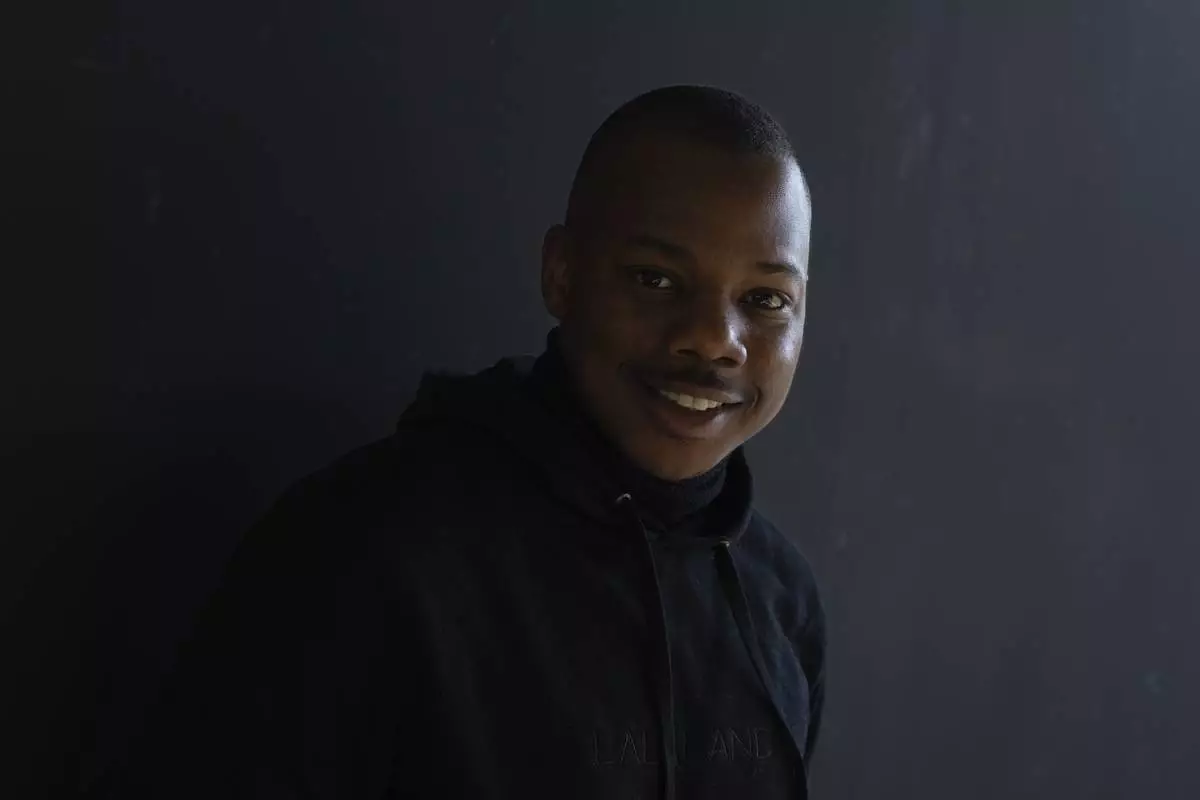
Michael Musandu, a co-founder and CEO of AI fashion company Lalaland.ai, poses for a portrait in Amsterdam, Netherlands, Friday, March 8, 2024. In March 2023, iconic denim brand Levi Strauss & Co. announced that it would be testing AI-generated models produced by the Amsterdam-based company to add a wider range of body types and underrepresented demographics on its website. (AP Photo/Peter Dejong)

Michael Musandu, a co-founder and CEO of AI fashion company Lalaland.ai, poses for a portrait in Amsterdam, Netherlands, Friday, March 8, 2024. In March 2023, iconic denim brand Levi Strauss & Co. announced that it would be testing AI-generated models produced by the Amsterdam-based company to add a wider range of body types and underrepresented demographics on its website. (AP Photo/Peter Dejong)
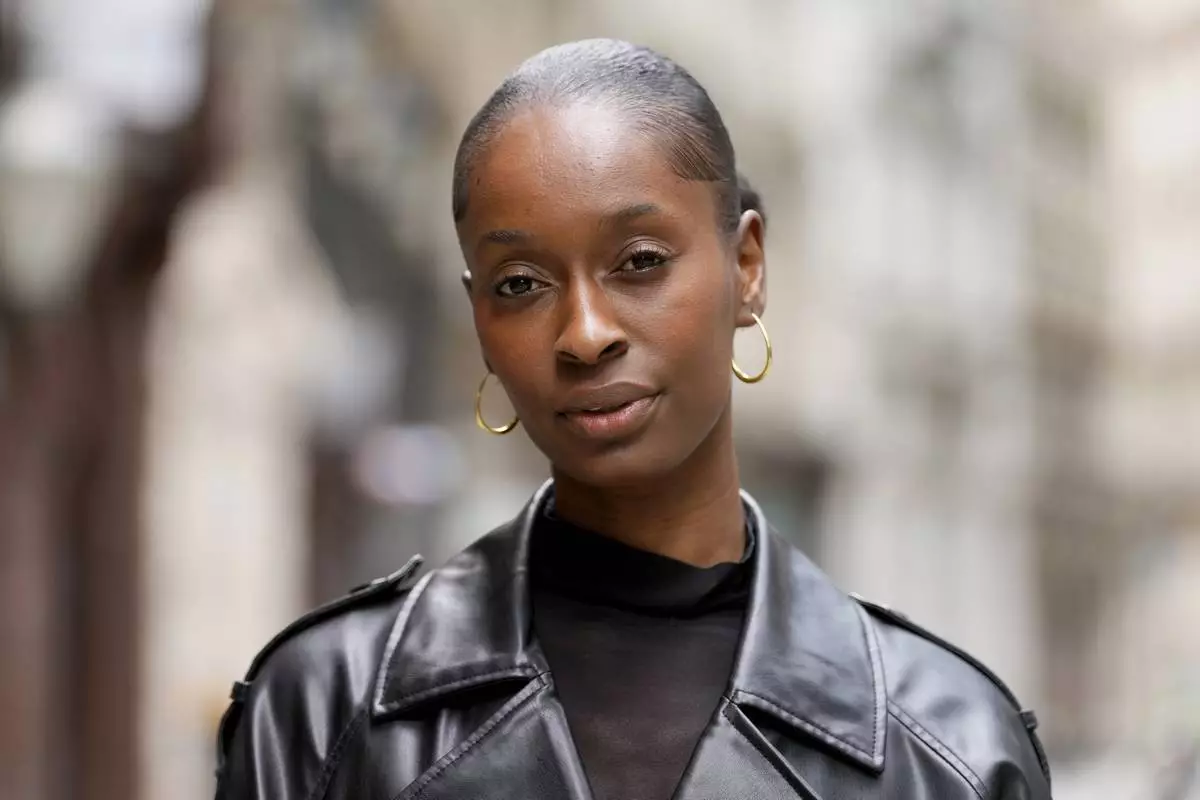
Fashion model Alexsandrah poses for a photograph, in London, Friday, March 29, 2024. The use of computer-generated supermodels has complicated implications for diversity. Although AI modeling agencies -- some of them Black-owned -- can render models of all races, genders and sizes at the click of a finger, real models of color who have historically faced higher barriers to entry may be put out of work. (AP Photo/Kirsty Wigglesworth)
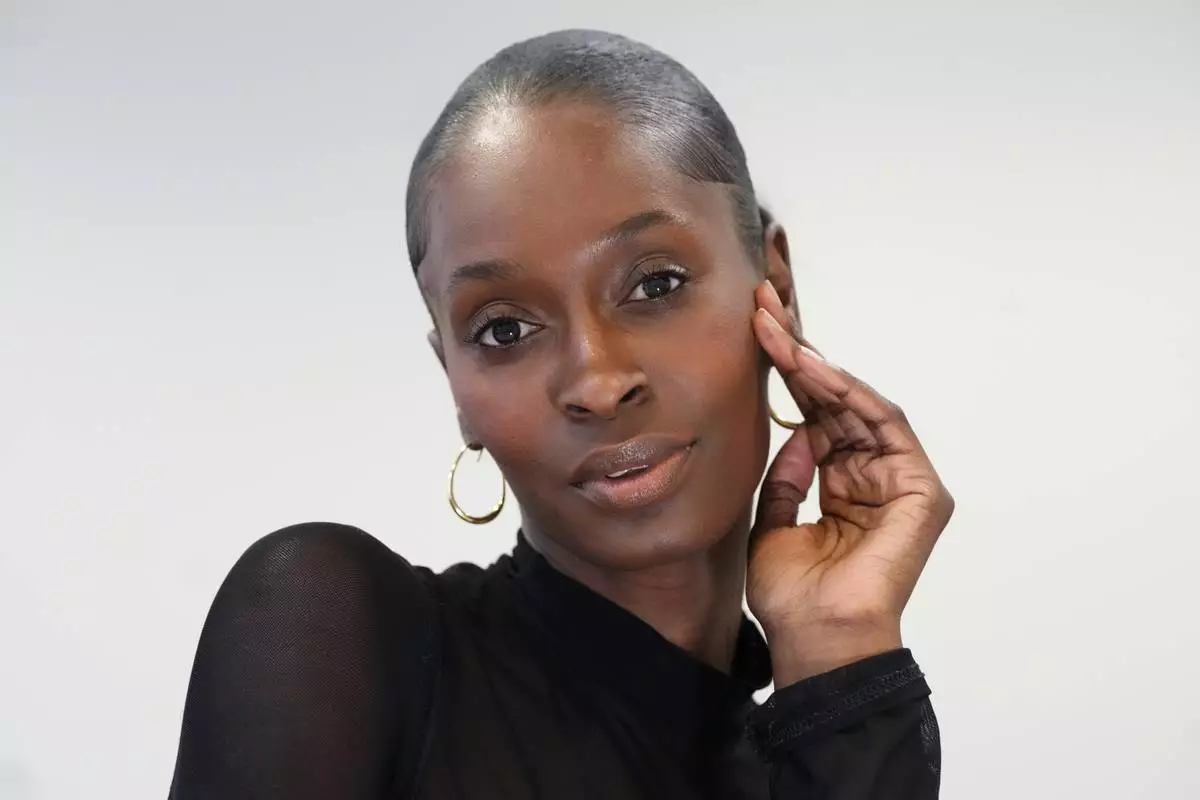
Fashion model Alexsandrah poses for a photograph, in London, Friday, March 29, 2024. The use of computer-generated supermodels has complicated implications for diversity. Although AI modeling agencies -- some of them Black-owned -- can render models of all races, genders and sizes at the click of a finger, real models of color who have historically faced higher barriers to entry may be put out of work. (AP Photo/Kirsty Wigglesworth)
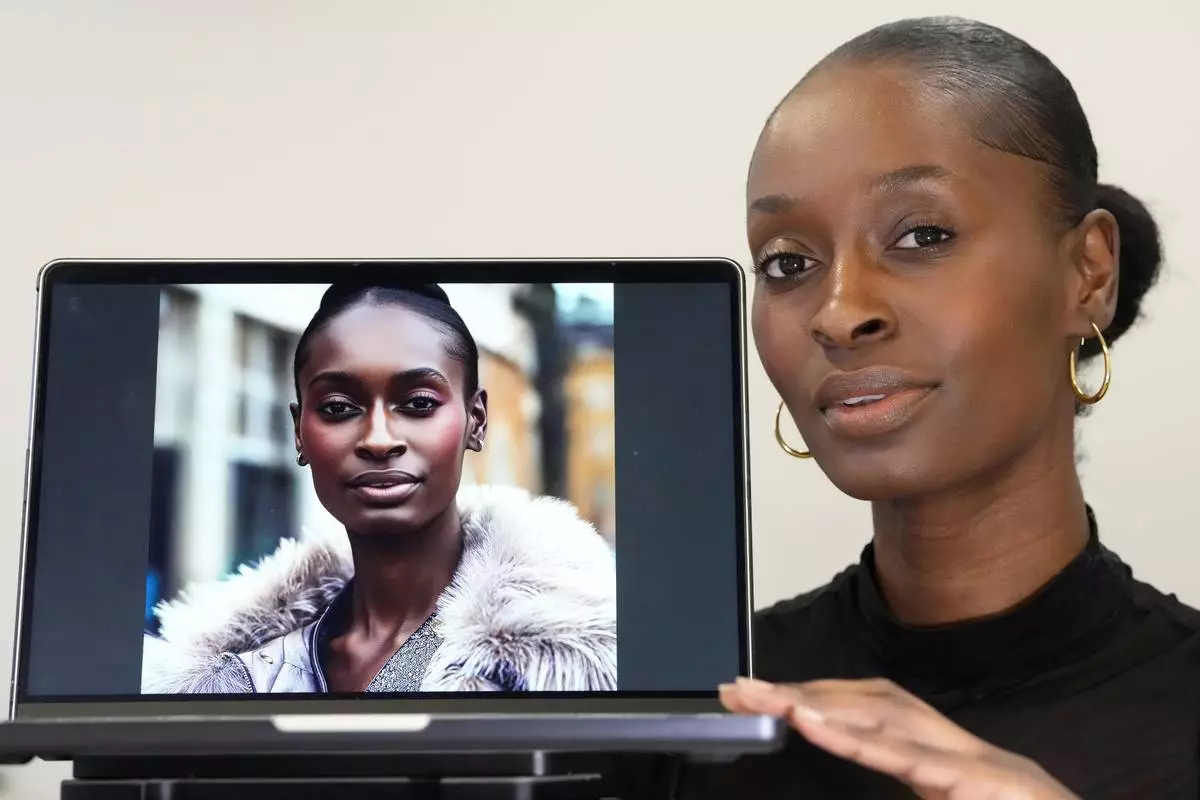
Fashion model Alexsandrah poses with a computer showing an AI generated image of her, in London, Friday, March 29, 2024. The use of computer-generated supermodels has complicated implications for diversity. Although AI modeling agencies -- some of them Black-owned -- can render models of all races, genders and sizes at the click of a finger, real models of color who have historically faced higher barriers to entry may be put out of work. (AP Photo/Kirsty Wigglesworth)














